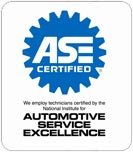It doesn’t seem like that long ago, where a few of us guys could get together during any given evening or weekend and have a great time while we fixed one of our cars. It was an honest, good time as well as a productive, money-saving thing to do with friends and of course with the help of the local parts store.
These days, we still own cars, but unless some friend has a garage equipped with thousands of dollars in electronic testing equipment and software programs most likely you won’t be able to repair your own car! How about that time, when you went to replace something seemingly simple, like your thermostat, and you are faced with a big piece of plastic covering almost the whole engine compartment and find that the engine looks totally different than anything you can relate to! Does this sound familiar?
Cars started changing drastically at the end of the 1970s. Fuel injection systems were introduced in the automotive market and electronic sensor controls became a very important part of this new system. In 1990, the last car sold in the United States with a carburetor was a Subaru. The criteria and motivation in car manufacturing is to find a better, more powerful, less pollutant and more fuel efficient vehicle. As consumers are we getting that? Sure we are, in today’s technology whatever mixture gets inside your combustion chamber will get burned 100%. In comparison, the air and fuel mixture existing in car of the past with carburetors, didn’t get completely burned and therefore created a waste of energy and produced pollution.
Here is a quick overview of how things work these days. It all starts with the “ECU” otherwise known as the engine control unit. This controls your whole, entire engine. The ECU receives information from different sensors. The ECU compares the data received from the various sensors, with its internal memory and gives out information to the fuel and ignition system. What happens when one of those sensors goes bad? In that case, the main brain or ECU gets the wrong information, the engine starts running badly and you will need a computer or scanner-decoder in order to communicate with the ECU and find the exact nature of the problem. Some sensors may already be familiar with are the oxygen sensor, mass airflow sensor and throttle positioning sensor. In our next column, we will get a little deeper into all of the sensors and what they do. In conclusion, don’t feel crazy, you are not alone. Cars just ain’t the same!
DREAMCARS TIP OF THE MONTH:
Electronics in your car are very sensitive. Here are some things that may help. These can be done by yourself or by your trusted auto technician:
1) Keep your battery terminals and contacts clean.
2) Check your battery output power periodically.
3) Clean all of your electrical grounds and keep them tight.











